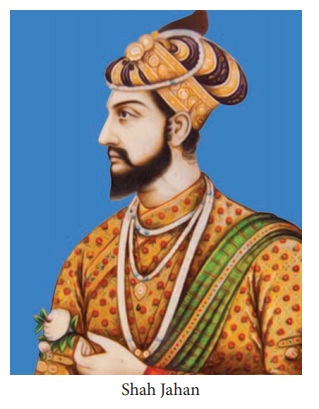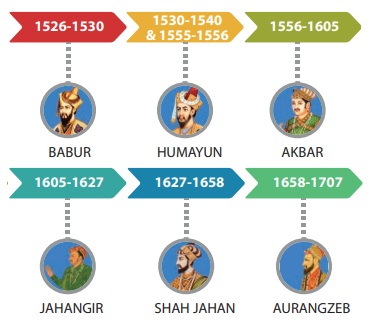The Mughal Empire | Term 2 Unit 2 | History | 7th Social Science - Shah Jahan (1627–1658) | 7th Social Science : History : Term 2 Unit 2 : The Mughal Empire
Chapter: 7th Social Science : History : Term 2 Unit 2 : The Mughal Empire
Shah Jahan (1627–1658)
Shah Jahan (1627–1658)

Prince Khurram, after a struggle for
power, succeeded Jahangir as Shah Jahan (King of the World). Shah Jahan ruled for
thirty years. He led a campaign against Ahmednagar and annexed it in 1632. Bijapur
and Golconda were also conquered later. Some Maratha warriors, notably Shahji Bhonsle
(Shivaji’s father), entered the services of the Deccan kingdoms and trained bands
of Maratha soldiers to fight against the Mughals. So there was a sustained resistance
in the Deccan to the Mughals from the Marathas too. Shah Jahan was intolerant towards
other religions than Islam. In his reign came the climax of Mughal splendour, which
is detailed in the next part of this lesson.
Shah Jahan fell ill in 1657 and a war
of succession broke out among his four sons. Aurangzeb emerged successful after
killing his three brothers, Dara, Shuja and Murad. Shah Jahan passed the last eight
years of his life as a prisoner in the Shah Burj of the Agra Fort.

Related Topics